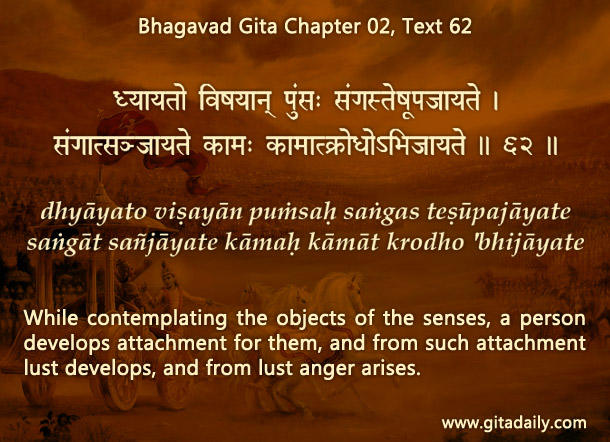Thoughts and emotions are sometimes seen as sequential — when we think steadily about something, we feel emotions in relationship with it. Pertinently, the Bhagavad-gita (02.62-63) states that contemplation (that is, prolonged thought) leads to emotions such as infatuation and anger.
Additionally, thoughts and emotions are sometimes seen as parallel — thoughts are associated with the head and emotions, with the heart. Accordingly, head-centered people are more rational, whereas heart-centered people are more emotional. We can introspect to understand whether we are naturally more emotional or more rational. Guided by such introspection, we can arrange our life — our roles, routines and responsibilities — to have greater inner harmony. Pertinently, the Gita urges us to act according to our own nature, not according to another’s nature (03.35, 18.46).
How can we apply these two understandings of the relationship between thoughts and emotions? First, we can watch our thoughts so that they don’t grow into unhealthy emotions that end in self-sabotage. More importantly, we can best manage our inner world not by restraining our thoughts, but by redirecting our thoughts, toward the supreme object of thought. Pertinently, the Gita urges us repeatedly to focus our thoughts on the Divine (02.61).
Second, irrespective of whether we are more rational or more emotional, we all have both a head and a heart. And ultimately, both the head and the heart need to be directed transcendentally. In the Bhagavad-gita’s parlance, the head can be broadly equated with the intelligence and the heart with the mind. And the Gita repeatedly urges us to offer both our mind and intelligence to Krishna (08.07, 12.14).
One-sentence summary:
Watch your thoughts so that they don’t grow into unhealthy emotions; and watch yourself to know your nature, be it emotional or rational, and learn to live harmoniously.
Think it over:
- How are thoughts and emotions sequential?
- How are thoughts and emotions parallel?
- How can understanding the relationship between thoughts and emotions be applied practically?
***
02.62: While contemplating the objects of the senses, a person develops attachment for them, and from such attachment lust develops, and from lust anger arises.


Reading everyday “Gita daily” slowly opening my vision…great analogy ….Thanks chaitanya Charan Dass…
Happy to be of service – yes, the Gita can keep expanding our vision for all of eternity.
Nice .please keep it up